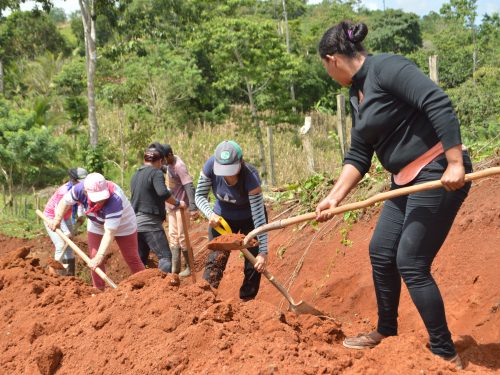
A liter of gasoline fluctuates between 600 and 700 colones ($1.20 to $1.40), but it doesn’t sustain life. It just fuels engines of cars, chainsaws and other machines that make our lives easier, and for this we have come to depend on it and value it highly.
But we depend on water even more. Just three days without water would cause serious health risks, and we would die within a week to 10 days without this vital liquid. However, many of us tend to take it for granted, and we spend much less time thinking about how much it costs. Maybe this is because a liter of water delivered to our faucet costs only .11, not even 1 colon, according to data from the Nosara ASADA. The cost is kept as low as possible since water is considered a human right.
The main public entity responsible for ensuring the safety of our water is the Ministry of Health, but other entities also play a role. Aqueducts and Sewers (AyA) administers and operates water sanitation systems, in collaboration with the various rural water associations (ASADAs). In addition, the Ministry of Environment and Energy (MINAE) manages water resources in accord with Costa Rican environmental laws, for example overseeing permits for exploiting rivers, and the Regulatory Authority for Public Services (ARESEP) regulates water rates (as well as gasoline prices).
Unfortunately, some unscrupulous people don’t really care about protecting our water. They want to do things the fastest, easiest, cheapest way and don’t take into consideration how that might affect our environment and our health. Agrochemicals and insufficient wastewater systems are common culprits in contaminating this vital resource. In April of 2012, we reported on hundreds of dead fish in the Nosara River, believed to be the consequence of people illegally using pesticides to catch shrimp.
In this issue, we follow up on four cases currently of concern in our area, and in the process we discovered something interesting—In Costa Rica in general, residual waters discharged into rivers or other bodies of water do not have to be tested for the presence of fecal matter. They only undergo physical-chemical analysis. However, the presence of fecal coliforms in water is an indicator as to whether the water is contaminated by sewage or other decomposing matter.
In June of 2011, The Voice reported on concerns that polluted water from the Nicoya sewage treatment plant is reaching the Rio Grande. Now, two years later, the contamination continues and although there is a plan to remedy the situation, it is not scheduled for completion until 2015.
A mother concerned about an outbreak of illnesses in schoolchildren in Nosara contacted The Voice in November of 2012. The water at Serapio Lopez School was suspected, and although the illnesses may have been simply a virus going around, this brought under the microscope the water quality. Here we follow-up on how the Nosara ASADA is doing, and we also report on possible contamination of the mouth of the Nosara River, which is currently being investigated by MINAE and, surprisingly, by OIJ, the investigative police.
In Samara, neighbors have repeatedly denounced concerns about the foul odor coming from wastewater being drained into the Lagarto River, many suspecting that the water is coming from the Pali supermarket, but as of yet the issue has gone unresolved. The Voice took a water sample directly from the drainage pipe to the laboratory of the University of Costa Rica for analysis, and it is undeniably contaminated with fecal coliforms. The question remains, where is this water coming from and who will take responsibility?
Another recent concern in Guanacaste is the presence of arsenic in the water in four cantons of Guanacaste, including Cañas, Bagaces, El Jobo and La Cruz, possibly affecting the health of many in those areas. This is worrisome news for those communities, but Darner Mora, of AyA’s water analysis laboratory, has assured the Voice that arsenic is not a problem in the water in the canton of Nicoya.
We urge our readers not to become complacent and not to think of protecting our water resources as someone else’s job. Protecting our water is everyone’s responsibility. Denounce cases of contamination, be persistent and make your voice heard until action is taken.







Comments